Week in Wrestling: Eric Bischoff discusses WWE’s Cruiserweight Classic
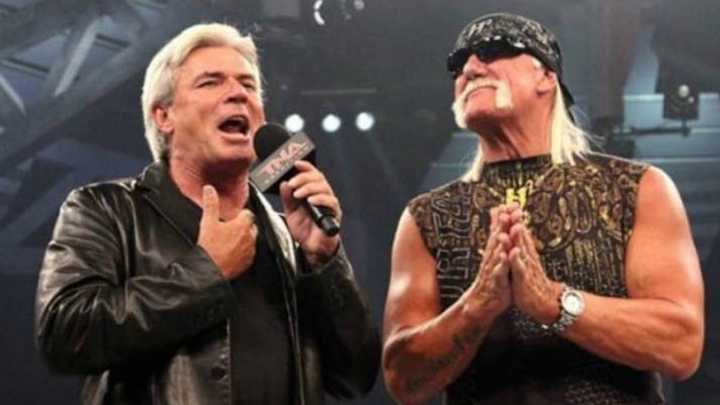
SI.com’s Wrestling Week in Review is published every Wednesday and provides beneath the surface coverage of the business of pro wrestling.
Eric Bischoff on the WWE’s Cruiserweight Classic
There is a reason the WWE’s Cruiserweight Classic looks, feels, and sounds familiar–and the reason is because Eric Bischoff created that exact same format twenty years ago.
“When I hired the first group of cruiserweights–which consisted of Dean Malenko, Chris Jericho and Eddie Guerrero–I sat them down in my office and I was very clear to them,” said Bischoff, who became the most influential man in wrestling during his reign as WCW president. “I said to them, almost verbatim, ‘You need to be my human car crashes at 9pm.’”
The talented group of Malenko, Jericho and Guerrero was referred to Bischoff by his partners at New Japan Pro Wrestling, which held a talent exchange program with WCW. The foresight and creativity to include junior heavyweights on Nitro, which was WCW’s flagship program, forever changed the business and will always be an integral part of Bischoff’s legacy–as is the decision to refer to the wrestlers as “cruiserweights.”
[youtube:https://www.youtube.com/watch?v=0KSPR19zzmM]
“When I created the Cruiserweight division in WCW, nobody called them cruiserweights in the industry at that point,” explained Bischoff. “That was a boxing term, not a wrestling term, but I did not want to call them junior heavyweights, light heavyweights, or anything that made them sound diminutive. I wanted it to sound special and cool. I’d watched wrestlers over in Japan who had that real hard-hitting, fast-paced athletic approach to their presentation, and I watched the luchadors when I’d been exposed to them in Los Angeles prior to hiring them.
The “Nature Boy” Ric Flair made headlines on his podcast last week while discussing Finn Bálor when he stated that, “I don’t think we’ll ever see the day, and I could be totally wrong, that a cruiserweight will never main event a WrestleMania,” but Chris Jericho, Eddie Guerrero and Rey Mysterio–all of whom were the WCW Cruiserweight champion on multiple occasions–have each headlined a WrestleMania.
Bischoff was a fan of the faster-paced, harder-hitting, more athletically-based presentation that the cruiserweights delivered.
“Let’s face it–the guys who were 5’8” and 140 pounds could do amazing things that a guy who was 6’8” and 300 pounds just couldn’t,” said Bischoff. “Having two separate styles of wrestling within our program was different.”
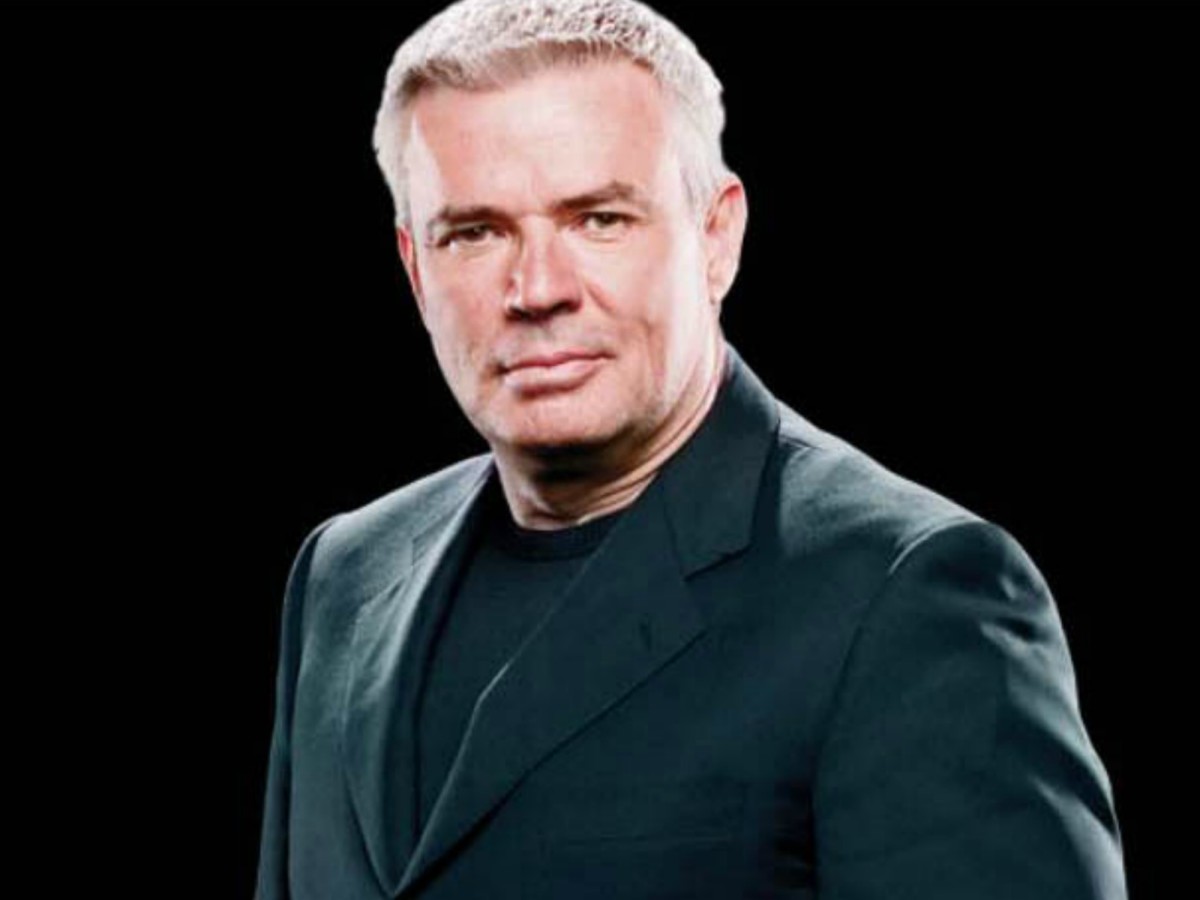
Bischoff just kicked off a new weekly podcast–Bischoff on Wrestling–and has released a DVD with WWE entitled: Eric Bischoff: Sports-Entertainment’s Most Controversial Figure. During the “Monday Night Wars” between WCW and WWE, Nitro ran from 8pm-11pm while Monday Night Raw aired from 9pm-11pm. Bischoff explained the cruiserweights were critical to the success of Nitro in the ratings war against Raw as WCW won the ratings battle for 84 straight weeks over WWE.
“At that time, I had a three hour show from 8pm-11pm,” said Bischoff. “It was easy to kick off the show hot, because we weren’t against the competition at that time, but to sustain a three hour show without a lot of diversity in our presentation was a real challenge. That’s why I wanted my cruiserweights to be live on television at exactly nine o’clock. We formatted our shows so that, at nine o’clock, we were in the heat of hard-hitting, fast-paced cruiserweight action, and it was so different from the WWE that it worked.”
The WWE’s highly acclaimed Cruiserweight Classic features thirty-two wrestlers from sixteen different countries, providing an air of authenticity to the tournament–identical to Bischoff’s blueprint for his Cruiserweight division in 1996.
“It was very important to have a very international feel to our show,” explained Bischoff. “I wanted performers from Mexico, I wanted performers from Japan, as well as American performers. I wanted our show to have that broader international feel to it because no one was doing that at the time.”
[youtube:https://www.youtube.com/watch?v=-NEcKfWxYzQ]
Filling the tournament with globally acclaimed wrestlers–like England’s Zack Sabre Jr, Japan’s Kota Ibushi and Mexico’s Gran Metalik–is only one of the ways the Cruiserweight Classic is applying the same principles for success that Bischoff created twenty years ago. WWE also installed Mauro Ranallo as its lead play-by-play announcer for the CWC. Ranallo is known for his extensive knowledge of professional wrestling around the globe–just like Mike Tenay, who Bischoff chose to call the matches for his cruiserweights in WCW.
“My [Legends interview with] JBL talks a little bit about my impact in wrestling where he enumerated a few of the things I did that still resonate today, even in the WWE product,” said Bischoff. “The fact there is a live show on Monday is a direct result of what I established and what I did to overcome them in the ratings. They reluctantly brought in the cruiserweights they brought in the Rey Mysterios, the Chris Jerichos, the Dean Malenkos–that had that style of wrestling even though they didn’t brand them the way I did.
‘The WWE also embraced more of a reality-based approach to wrestling a year or two after I established it. I knew, deep down inside, were it came from. The WWE did it better than I did, and they’re still here and I’m not, but nonetheless–I knew where it came from.”
News of the Week
Per a report by TMZ, Brock Lesnar will not be suspended by the WWE even if found guilty of doping violations prior to his fight at UFC 200. The reason was clear–part-time WWE performers are not subject to the company’s Wellness Policy.
The WWE’s ruling confirmed two pieces of confusion: the first is yes, Lesnar will be wrestling Randy Orton at SummerSlam.
The second, and it is clear from this incident, is that part-time performers play under a different set of rules in WWE.
This double standard was one of CM Punk’s key sources of frustration during his WWE run. How is a superstar, and let’s use Punk as an example–though it could just as easily be Cesaro or Apollo Crews–supposed to become a bona fide star when the rules favor the part-time talents? Punk vented on his infamous podcast appearance with Colt Cabana that he hated the fact that he was booked to lose to part-timer The Rock at the 2013 Royal Rumble, booked to lose to part-timer The Undertaker at WrestleMania 29, and then booked to lose again to part-timer Brock Lesnar at the 2013 SummerSlam. Punk explained that while the part-timers would then exit the company, he would still be there on Raw the very next night.
The WWE is always working to build new stars, but that has proved extremely difficult over the past decade with the part-time legends playing by a different set of rules.
The Lesnar ruling is especially devastating for full-time WWE talent. It’s already very hard to become a star in this business, and even harder when you are forced to play by one set of rules while the superstars operate under another.
Raw has delivered a better program for the past two weeks than Smackdown, but by the time WrestleMania 33 rolls around, there is no doubt that the premiere show is going to be Smackdown on Tuesday nights.
Yes, the Smackdown roster is thinner than the one on Raw. But make no mistake–Smackdown has substantially more room to grow than Raw.
I have enjoyed the inter-brand war between Lesnar and Randy Orton, as Orton RKO’d Lesnar on Raw and Lesnar arrived at Smackdown to F5 Orton. WWE is proving that, when done correctly, having a wrestler from the opposing brands’ roster invade is an extremely effective way to enhance the rivalry.
In other news…
• The difference in promo skills between WWE superstars and the recent NXT call-ups is striking. Finn Balor and Sasha Banks were exposed this past week on Raw for their weak interview skills, especially when pitted against the likes of Chris Jericho (who delivered a Big Cass impression to write home about) and Seth Rollins. Balor held up much better, however, than Banks.
• Cesaro defeated the growing-more-stale-by-the-week Sheamus on Raw, but his appearance on WWE’s flagship show did more harm than good. Why not give Cesaro the microphone and allow him to cut a promo after defeating Sheamus? Instead, Cesaro received less mic time on Raw than Nia Jax, and his fantastic promo venting frustration after being drafted late to Raw was completely overlooked for a second consecutive week.
• Wait, so you’re telling me that John Cena hosted the Teen Choice Awards… and his girlfriend, Nikki Bella, won an award? Chalk that one up as an amazing coincidence.
• AJ Styles and Cena delivered a solid back-and-forth interview on Smackdown, but I still cannot fathom how Styles was split from Karl Anderson and Luke Gallows. No other successful act (sorry, Social Outcasts) was broken up during the brand extension aside from The Club, who all made their names in the business wrestling outside of WWE.
• Dolph Ziggler needed a legitimate win to build up his chances against WWE champion Dean Ambrose at SummerSlam, but was it necessary to feed him Bray Wyatt? The finish then saw Wyatt and Erick Rowan clean house against Ziggler and Ambrose, immediately cooling Ziggler’s push.
• Though it has happened before, it is rare whenever the Raw broadcast team does not include a veteran wrestler on commentary. I thought it was interesting that Corey Graves was introduced at the beginning of Raw as a former NXT tag team champion, but Michael Cole is working with two very inexperienced talents in Graves and Byron Saxton. As for the broadcasting crew on Smackdown, color commentator David Otunga, to put it as politely as possible, has a lot of room for growth.
[youtube:https://youtu.be/gfaocLFMBbY]
• If the year were 1988, Braun Strowman–a so-called “gargantuan wrecking machine” who destroys his puny opponents–would be on the fast track to headlining Saturday Night’s Main Event with Hulk Hogan. The Strowman character, as well as its direction, is completely out of touch with today’s fan base.
• If the Mark Henry match with Rusev looked familiar, it’s because it already took place two years ago. WWE revisited the exact same angle that ran from September of 2014 that actually closed out a Raw. The result in both cases–a Rusev victory – was also identical. The inclusion of Roman Reigns and Cesaro into the United States championship picture restores some much-needed importance to the title.
• Kevin Owens’ presentation and delivery outside the ring are nearly as good as his work inside the squared circle. Owens and Jericho teaming up against Enzo and Cass should be a great match at SummerSlam.
• The upcoming Ring of Honor pay per view on August 19–Death Before Dishonor XIV–includes a must-see world title match between champ Jay Lethal and the Bullet Club’s Adam Cole, as well as a triple threat tag team title match featuring ROH tag champs The Addiction, Michael Elgin and Hiroshi Tanahashi, and Tetsuya Naito and Evil that could steal the show. The match I’m looking forward to most is IWGP world champ Kazuchika Okada battling Dalton Castle in an extreme clash of styles.
The Shoot: Jay White
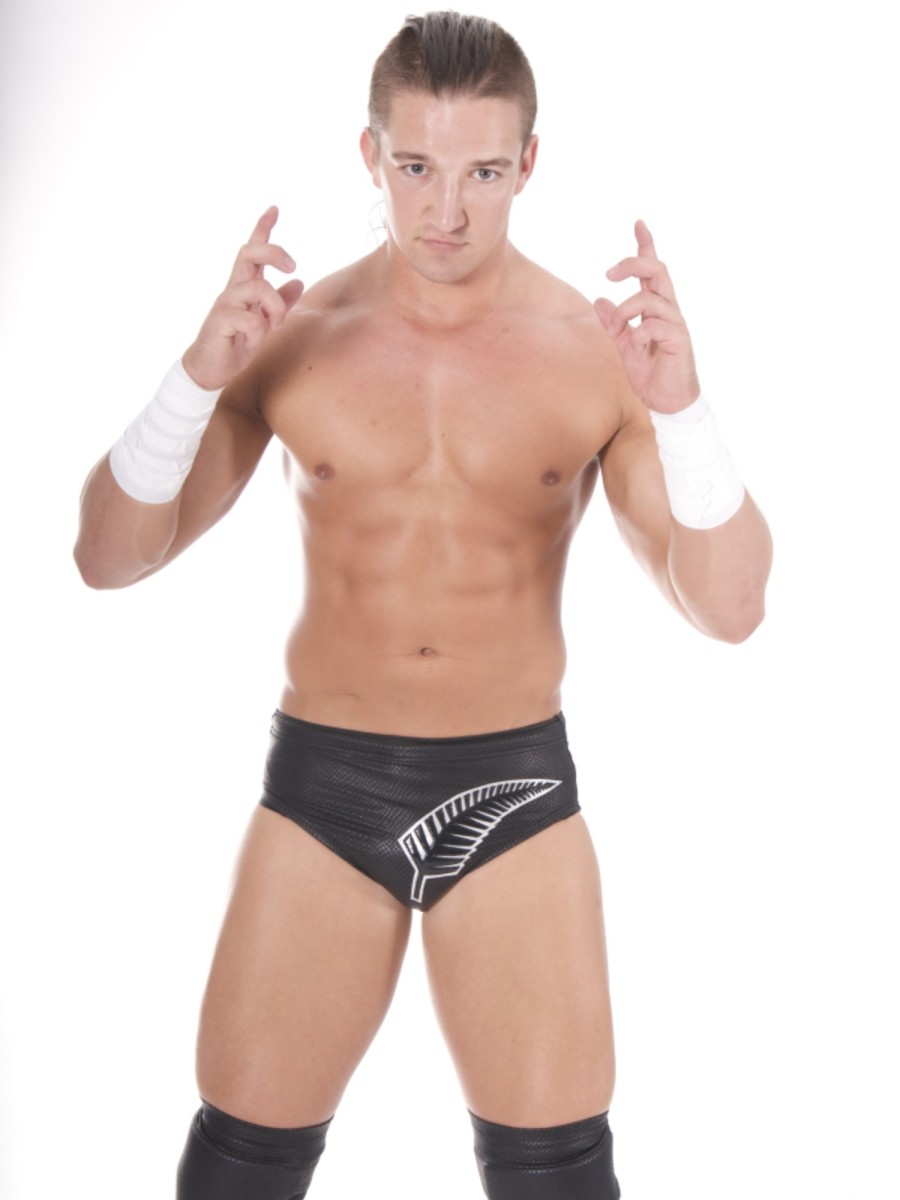
At only 23 years old, Jay White has spent time in New Japan Pro Wrestling and is now working with Ring of Honor in their talent exchange program. The New Zealand native was discovered by Finn Bálor while wrestling in England, brought to New Japan’s dojo as a “young boy”–or rookie as we know the term in North America–and now, the 6’1”, 200-pound White has his sights set on success in Ring of Honor.
Wrestling with a Dream
Being relatively new to the world of pro wrestling, it would make sense to just talk about my journey to NJPW and ROH. Both of those companies have done interviews touching on my background, so although I will still go into that, what I would really like to explore is the mindset I had to have and the choices I had to make in order to even have a chance at getting to where I am today.
I was never a top athlete in school or in any of the sports I played. I never really excelled at anything I did. Don’t get me wrong–I wasn’t useless, but I would never have been the one who people picked to have gone far in their chosen field, whatever that may have been.
I had it good growing up. I lived on the Hibiscus Coast, forty-five minutes north of Auckland, New Zealand, surrounded by beaches and a very nice area. If you’re looking to have a laid back life, this would be the ideal place. A lot of people fall into the mold of getting a “normal” job and just working for the weekend, then repeating that cycle fifty-two times a year.
That wasn’t the life I wanted, and I was determined to get away from home and do something with my life. I didn’t want to look back and wish that I had tried to do more and taken more opportunities, as I knew a couple of people close to me who felt like that, and I didn’t want to have that regret. That’s where wrestling came in.
I started watching wrestling late in 2004 just before I turned twelve, and, of course, I was hooked straight away. Like any kid that watches wrestling, I wanted nothing more than to become a wrestler. I truly believed I could achieve it, even though my mum told me a number of times that I was too small. A few people would make fun of the fact that I followed wrestling, and eventually I stopped watching after WrestleMania 23 in 2007. I left the idea of being a wrestler behind as a small kid’s unrealistic dream.
But hey, being realistic is the most common path to mediocrity.
Fast forward to the start of 2011, I had just completed basic officer training in the New Zealand Army after finishing high school, but I knew that that wasn’t for me. So there I was laboring for a friend’s dad on a construction site, with no idea what I wanted to do with my life. Next thing you know, as if it was written out in a script, the radio channel announced that they would be running a competition to send someone to WrestleMania. It was always a dream to go to WrestleMania as it was for anyone who had ever been a fan, so I managed to call the station, won a debate with another caller, and got placed into the draw to win the grand prize of actually going to WrestleMania 27 at the Georgia Dome in Atlanta, Georgia.
Two weeks later, on the day the radio station was going to draw a winner, I was at the same building site. I sat down next to the radio with my phone, eagerly awaiting the impossible. I could hear the disc jockey dial a number on the air, and then my entire world went silent. My phone started to vibrate whilst displaying an unknown number. I jumped up, answered the phone, and started jumping around yelling as they told me the news–flights, accommodations, tickets to Axxess, the Hall of Fame induction ceremony, and a trip to WrestleMania 27.
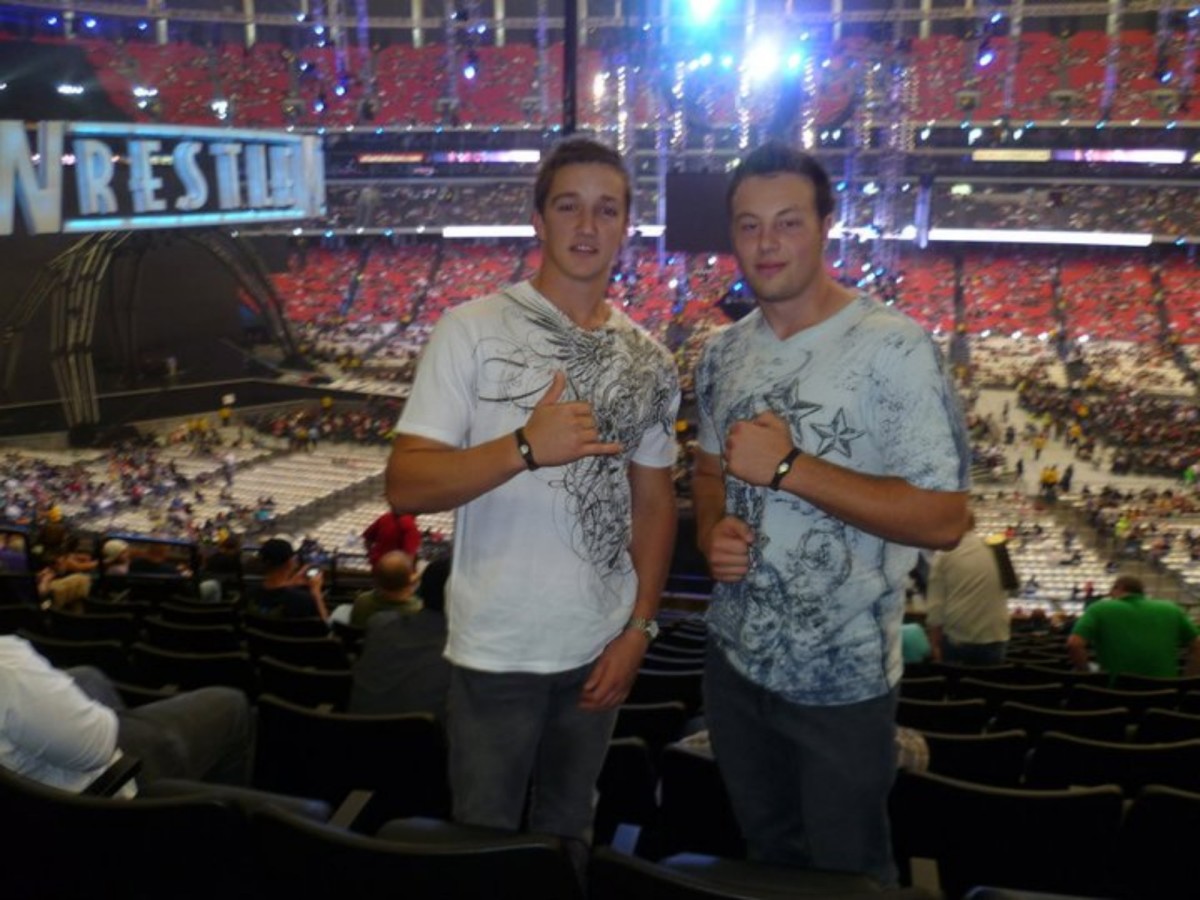
Those were an amazing five days in Atlanta–it was the trip of a lifetime, one that I never thought was even possible. I remember thinking the whole time I was there, especially as Shawn Michaels was inducted into the Hall of Fame, that since this trip–which was something I never thought would ever happen – really happened, then why couldn’t I actually become a wrestler? I realized then that anything is possible. The trip made me believe that I was meant to be a wrestler. I believed that even more than I did when I was just a little kid with a crazy “unrealistic” dream–and I also learned that, when you truly believe in something, nothing can stop you. I am living proof that that isn’t just some cheap quote.
From that point, I decided that I needed to come up with some sort of plan as to how I was going achieve this. Over the course of 2011, I gained my qualification as a personal trainer so I could work whilst I trained for wrestling. I did not know much, but I knew that I had to get out of New Zealand as there was little to no wrestling scene there. America was proving difficult to find a job, a training school and a visa, so my next best option was England. Seeing as I have a Dutch passport, I just figured that if you want to make something of yourself you go to America, and then the next best thing is England. I left home in March 2012, not telling anyone the real reason why–I just said that I was going to go traveling.
I spent ten months in Guernsey with my friend and his family until I made the decision to move to England in January of 2013. Moving to Portsmouth with no place to stay, no job, no friends and no idea if this was even possible was not easy–I had nothing but the address of the training school. This was one of the most mentally challenging things I have ever done, and I came close to packing it in on a number of occasions. I had obstacle after obstacle come up, but my belief got me through. The first time I told any of my family or friends what I was really doing was on the evening of my debut when I got my Mum to call me from New Zealand. From there, the ball got rolling with wrestling. A year later I met FergalDevitt–FinnBálor–who initiated my transition into the NJPW dojo, and the rest is history.
I’m not religious by any means. I personally don’t believe in a figure in the sky that created this world and answers everyone’s problems. But I do believe that everything happens for a reason and that everyone is born with a purpose, even if they don’t fulfill it. One of my idols is Will Smith, whose ideology and quotes have played a big part in molding my mind and motivating me. Something he talks about is the flow to the universe that he’s come to know, and this is something that I wholeheartedly believe. Everyone has a journey that is mapped out, and the choices and decisions we make are what determines the exact path we will take. I made the decision that I was going to become a professional wrestler. I didn’t come up with any other options as I didn’t need any. I wasn’t going to let anything get in my way. No matter the obstacle, I knew that, if I didn’t give up, I would eventually find a way–the only person that could stop me was me. This all came from the belief that I was meant to be, and born to be a Professional Wrestler.
I believed in me. Sooner or later, so will everyone else.
Jay White can be seen live on pay per view during Ring of Honor’s Death Before Dishonor XIV on Friday, August 19 in Las Vegas, Nevada.
Weekly Top 10
1.) Seth Rollins, WWE
Rollins excelled both on the microphone and in the ring with a win on Raw over Sami Zayn.
2.) Brock Lesnar, WWE
The Beast and Paul Heyman are back, and we were treated to rare appearances by the duo on both Raw and Smackdown.
3.) Randy Orton, WWE
Anyone else curious as to how the Orton-Fandango match was going to finish?
4.) Finn Bálor, WWE
Bálor delivered some impressive offense in his showdown with Seth Rollins on Raw, but beating the former two-time champ on the mic is going to be a very difficult task in the buildup to their match at SummerSlam.
5.) Kenny Omega, New Japan Pro Wrestling
The good news: Omega currently sits in first place in his G1 Climax bracket with six points. The bad news: there are five other wrestlers (Michael Elgin, Yoshi-Hashi, Yuji Nagata, Tetsuysa Naito, and Katsuhiko Nakajima) also tied for first in that same bracket.
6.) AJ Styles, WWE
Styles and Cena were terrific with their verbal jousting on Smackdown, and their rematch at SummerSlam is now official.
7.) John Cena, WWE
Even with his increased Hollywood presence, Cena is still a key part of WWE–just like he promised would happen four years ago in his feud with The Rock.
8.) Dolph Ziggler, WWE
Ziggler defeated Bray Wyatt on Smackdown in his reboot before fighting Dean Ambrose for the world title at SummerSlam.
9.) Dean Ambrose, WWE
Ambrose did a lot of talking on Smackdown, but there is no building momentum for the current WWE champion.
10.) Roman Reigns, WWE
He’s not a good guy, he’s not a bad guy, he’s a guy competing for the U.S. title.
Five Questions with… Al Snow
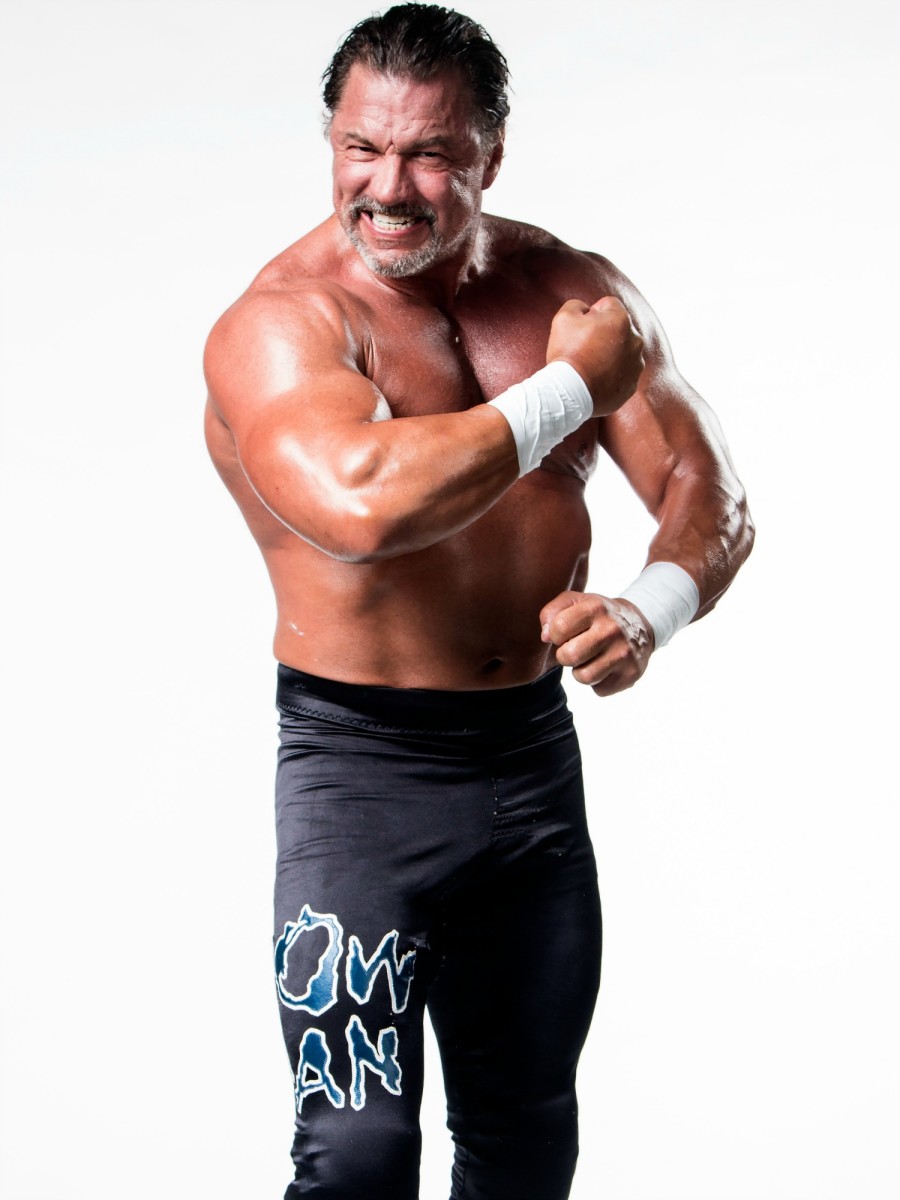
Over the past two decades, Al Snow has become one of wrestling’s most recognizable names. Snow, who once made his name in ECW in 1995, is currently serving as a behind-the-scenes agent with TNA, as well as the on-screen manager of The Tribunal. Snow also opened Al Snow’s Wrestling Academy in London this past November.
SI.com: Managing is a new role for you in TNA, but your appearances on TNA programming enhance every segment in which you appear, reaffirming that you are still an incredible storyteller. How did your new role come up, and why did you change your look?
Snow: I still love to perform. I perform any chance I get. An opportunity came up to fill a role to be a piece in the puzzle, and I still love to perform. This gives me a chance to re-invent myself, to recreate myself, and start off in a completely new direction at a different point in my career. I knew, instinctually, I had to go someplace else and change my appearance, change my approach, and think differently. If I didn’t change my physical appearance, people would still view me as the same exact product. I needed to make a new product, and part of that is the packaging and the label. I cut my hair, let my gray hair show, and developed this new outside packaging to provide a new opportunity and a new lease on life. Now I can come across as this bitter, salty veteran–and now I also look the part.
I run the whole gamut–I’m a producer, I’m an agent, I am a coach, trainer, in-ring talent, on-air manager. You name it, and I’m pretty much doing it. If anybody wants to watch and see me do the wonderful things that I do, you can tune in every Thursday night on Pop TV at 8pm ET.
SI.com: You are also working behind the scenes at TNA, and your role includes finding new talent and working with the current roster. You have a background in this capacity, as you helped run former WWE developmental territory Ohio Valley Wrestling dating back to 2007. How similar was OVW to NXT?
Snow: The difference between OVW and NXT is OVW was a throwback to a very regional territory. It was operated on a very local and regional basis, and under the same premise as what we used to do. I wanted to build it up when I first came in and took over. They were running two or three live events a month, and a weekly television production show every Wednesday night. We ran 186 live events and drew, on average, 400 people. The TV show became the number one rated show on the local network, and several times beat out the local news. For us, that was successful, but NXT operates on a different platform. It’s not regional or local, but it’s more of a sister company to WWE. They tour, run smaller venues, and they’re doing really, really well, which is great. Any success that allows the talent more of an opportunity to perform in front of a live audience is always a boon for the wrestling business as a whole.
SI.com: How do you continue to rebuild TNA’s image, which has been tattered over time?
Snow:TNA is on the right track. They’re bringing in new and different talent, and that’s the biggest thing. Everyone was talking about Cody Rhodes leaving WWE and how that was terrible, but it’s not at all. You need to put yourself in a position where you can leave on your terms. I recommend talent if I see somebody out there that I think can do business and do what a wrestler’s job really is. There is a lot of misunderstanding over a wrestler’s job–a wrestler’s job is not to wrestle. A wrestler’s job is much like a movie actor, and it’s the hardest job you can do. A wrestler has to motivate people to leave their comfortable chair in their house, drive to a building, pay a significant amount of money to sit in an uncomfortable chair around people they don’t want to sit around, to watch you do your job. That’s a tough, tough job to do.
SI.com: Are you surprised that, nearly twenty years after its demise, the biggest star in ECW history is Paul Heyman?
Snow: Not at all, not one bit. Paul Heyman was ECW. Paul Heyman manufactured and created ECW, and Paul is a master of reinventing himself–that’s how he has lasted as long as he has. You only serve one of two purposes in professional wrestling. Unlike any other form of entertainment, there is no third option. You’re either the thing that sells tickets, and that’s the thing that motivated everyone to show up at the building that night or tune in on television or buy that pay per view, or you are one of the things that helped that thing sell tickets, motivate people to watch the television show, etc. There is no third option, and Paul E. has been able to adeptly function in those two roles for his entire career.
SI.com: Is there a connection between Al Snow’s Wrestling Academy and TNA? And how much has wrestling changed over your career?
Snow: I just opened the wrestling academy in England, and I’m working in conjunction with TNA and I’m very happy to do so. I’m scouting for U.K and European talent, which is a completely untapped reservoir. The WWE has just started to reach out in that direction in the last few years, but there are so many talented individuals over there as far as fresh faces, fresh styles and fresh approaches. Impact Wrestling’s association with the wrestling academy allows us both to explore and find a lot of new, young talent that has had no exposure.
Just to reference back how important it is to find new, young talent, it was Paul Heyman’s ability to access a wealth of experienced talent that had little or no national exposure–but had an underground following and had the experience to know how to exploit that underground following and build an audience–that was ultimately the key for ECW. That’s what NXT is doing. They’ve taken that same concept with guys who have had limited or only some national exposure–but had an underground, or now, an internet following–and use that to build a broader audience.
Everyone says the wrestling business has changed. It’s evolved, it’s grown, but it’s never changed. There is still only one thing that we’re selling, and we sold this in 1916 and we’re selling this in 2016. When the talents do what they’re supposed to do in an excellent way, then the outcome means everything. That’s the only thing that has a consequence that the audience can understand. It’s relatability. The audience wants to see you beat someone up and then beat him. You need to make the audience want to see one person not only beat up the other person, but to beat the person up and then beat them to prove he is the better man.
Tweet of the Week
Be like Bill! Pre-order today! https://t.co/a4LPiFx43n pic.twitter.com/ZevVE0f08B
— Ettore “Big E” Ewen (@WWEBigE) August 1, 2016
President Clinton loves his Booty O’s.
Justin Barrasso can be reached at JBarrasso@gmail.com. Follow him on Twitter @JustinBarrasso.
